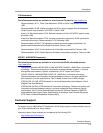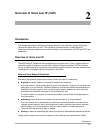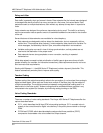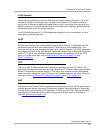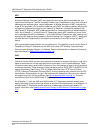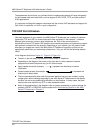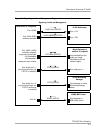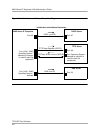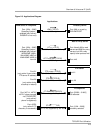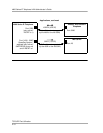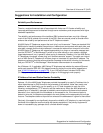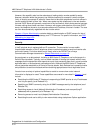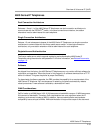
4600 Series IP Telephone LAN Administrator’s Guide
TCP/UDP Port Utilization
2-6
The assessment should leave you confident that the implemented network will have the capacity
for the foreseen data and voice traffic, and can support H.323, DHCP, TFTP, and jitter buffers in
H.323 applications.
It is important to distinguish between compliance with the minimal VoIP standards and support for
QoS, which is needed to run VoIP on your configuration.
TCP/UDP Port Utilization 2
Like most equipment in your network, the 4600 Series IP Telephones use a variety of protocols
(particularly TCP and UDP) to communicate with other equipment in that network - numerous
different types of servers, routers, other telephones, etc. Part of this communication is
identification of which TCP and/or UDP ports are to be used by each piece of equipment to support
each protocol and task within the protocol. Depending on your network, you may need to know
what ports (or ranges) are used in the 4600 Series IP Telephones’ operation so that you can
appropriately administer your networking infrastructure. If so, you will find the following material
useful.
In the diagrams that follow, Figure 2-1
, Figure 2-2, Figure 2-3:
■ The box on the left always represents the 4600 Series IP Telephone.
■ Depending on the diagram, the boxes on the right refer to various pieces of network
equipment with which the phone may (or will) communicate.
■ Open-headed arrows (for example, ) represent the direction(s) of socket
initialization.
■ Closed-headed arrows (for example, ) represent the
direction(s) of data transfer.
■ The text associated with either end of the arrows identifies the port (one number) or ports
(ranges given within brackets) supported by the 4600 Series IP Telephones for the specific
situation, as well as any additional qualifications or clarifications. In many cases, the ports
used are the ones called for by IETF or other standards bodies.
■ Many of the explanations in the diagrams refer to system parameters or options settings (for
example, IRSTAT or DIRSRVR) that are explained in Administering Options for the 4600
Series IP Telephones in Chapter 4.




